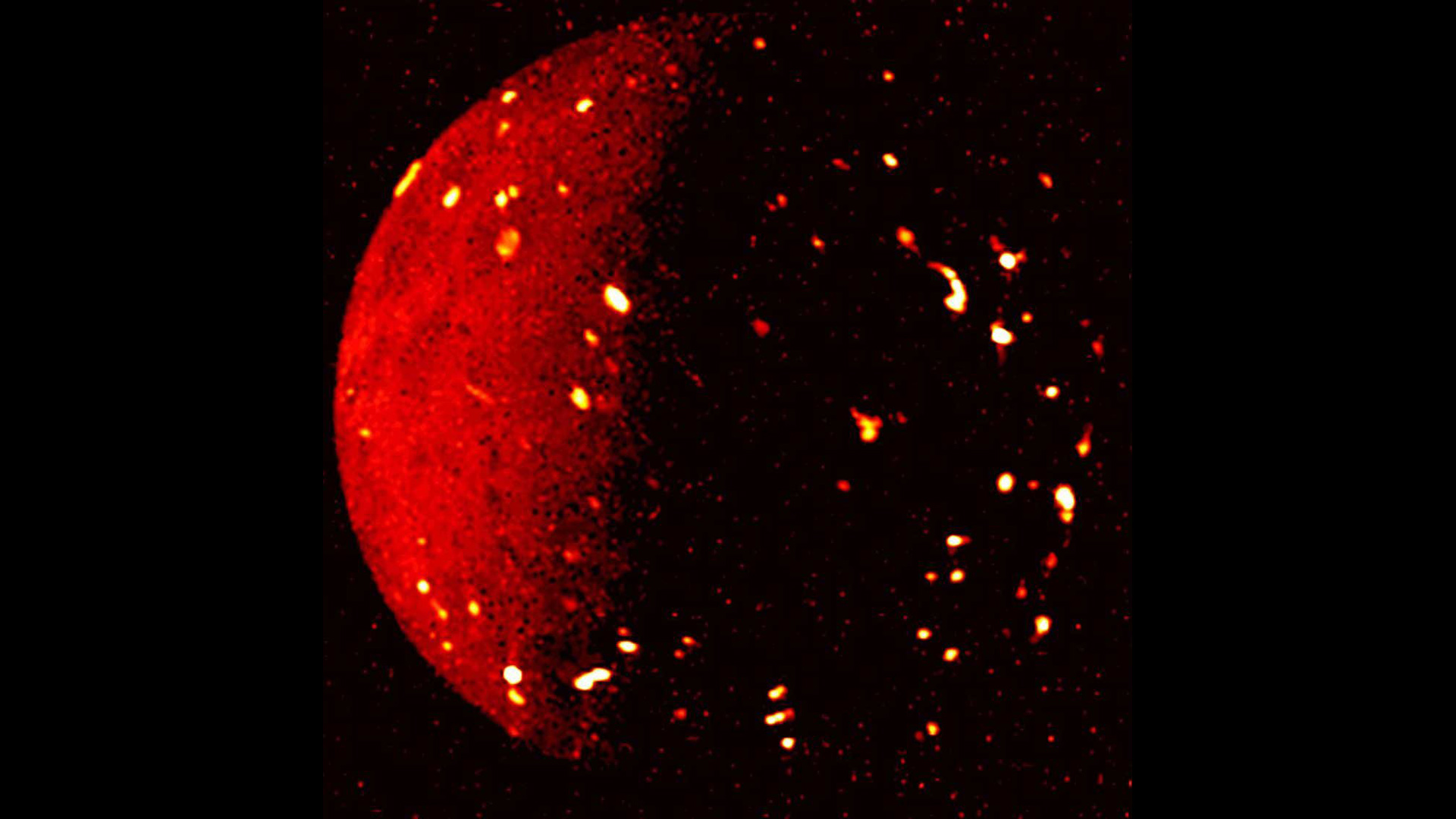NASA probe to inspect the solar system's most active volcanic world, Jupiter's Io
Get ready for Io, the most active volcanic body in the solar system.

After exploring Jupiter's moons Ganymede and Europa, NASA's Juno probe is about to set its sights on the third of the giant planet's four main moons — the mysterious volcanic moon Io.
Juno, which has been orbiting Jupiter since 2016, received commands from NASA's control teams to take images of Io on Thursday (Dec. 15). Io, about as big as Earth's moon, will remain in Juno's focus for the next year and a half as the probe performs a total of nine flybys of the moon, two of which will take the probe within 930 miles (1,500 kilometers) of its surface. For comparison, the Orion spacecraft flew past Earth's moon during the recently concluded Artemis 1 mission at a much closer altitude of only 80 miles (130 km).
The flybys, NASA said in a statement, will enable scientists "to perform the first high-resolution monitoring campaign of the magma-encrusted moon, studying Io’s volcanoes and how volcanic eruptions interact with Jupiter’s powerful magnetosphere and aurora."
Related: NASA's Juno spacecraft snaps its most detailed view of Jupiter's icy moon Europa
Juno has taken a brief look at Io before. In June 2022, the moon passed the moon at a distance of about 50,000 miles (80,000 km)
Io is very different from the ice-encrusted moons Ganymede and Europa, which are both believed to hide oceans of water underneath their frozen surfaces, which, scientists think, might harbor primitive forms of life.
Io's surface, on the contrary, is covered in lakes of lava spouting from hundreds of volcanoes scattered on the moon's surface. Some of the lava geysers erupt into heights of dozens of miles, or kilometers, according to NASA. Although Io is unlikely to host life, unlike Ganymede and Europa, scientists are still eager to get a detailed glimpse of this moon, which is the most tectonically active body in the entire solar system.
Get the Space.com Newsletter
Breaking space news, the latest updates on rocket launches, skywatching events and more!
The observations of Io are part of Juno's extended mission, which commenced in 2021.
"The team is really excited to have Juno's extended mission include the study of Jupiter's moons," Juno Principal Investigator Scott Bolton of the Southwest Research Institute in San Antonio said in the statement. "With each close flyby, we have been able to obtain a wealth of new information."
Although Juno's sensors were primarily designed to study the gaseous giant, they have been delivering outstanding results also during the examination of the Jovian moons, Bolton added. The flyby of Ganymede in 2021 produced a flurry of papers on the moon's surface, magnetic field, interior and interaction with Jupiter's magnetosphere. The September 2022 flyby of Europa generated the first-ever 3D observation of the icy world's frozen shell.
Measurements from Juno's Microwave Radiometer (MWR) instrument even allowed the team to peer underneath Europa's and Ganymede's ice cover for the first time. The instrument was able to measure the structure, purity and temperature of the moons' water ice and their underlying oceans up to the depths of 15 miles (24 km).
"When we combined the MWR data with the surface images, we found the differences between these various terrain types are not just skin deep," Bolton said. "Young, bright terrain appears colder than dark terrain, with the coldest region sampled being the city-sized impact crater Tros [on Ganymede]."
Other missions have previously taken a look at Jupiter and its moons including Galileo, Cassini and Voyager. The Jovian system will get a new visitor in the future, the European Jupiter Icy Moons Explorer (Juice) mission, which is scheduled to launch in April 2023. It will take eight years, however, before Juice reaches its destination.
Follow Tereza Pultarova on Twitter @TerezaPultarova. Follow us on Twitter @Spacedotcom and on Facebook.
Join our Space Forums to keep talking space on the latest missions, night sky and more! And if you have a news tip, correction or comment, let us know at: community@space.com.

Tereza is a London-based science and technology journalist, aspiring fiction writer and amateur gymnast. Originally from Prague, the Czech Republic, she spent the first seven years of her career working as a reporter, script-writer and presenter for various TV programmes of the Czech Public Service Television. She later took a career break to pursue further education and added a Master's in Science from the International Space University, France, to her Bachelor's in Journalism and Master's in Cultural Anthropology from Prague's Charles University. She worked as a reporter at the Engineering and Technology magazine, freelanced for a range of publications including Live Science, Space.com, Professional Engineering, Via Satellite and Space News and served as a maternity cover science editor at the European Space Agency.









